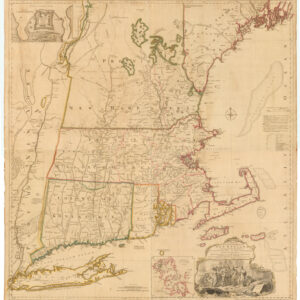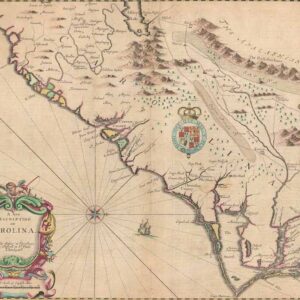A 1913 Sibley’s map of Rochester, NY.
Map of the City of Rochester, New York.
$200
In stock
Description
This 1913 map of Rochester, New York, captures the city in the midst of growth and industrial evolution. It was issued by the Sibley, Lindsay & Curr Company, a prominent department store in Rochester, New York. The Sibley Building, an architectural gem in downtown Rochester, is featured above the map’s legend.
Central to the city’s layout is the Genesee River, meandering through the city and punctuated by its various falls. Key transportation infrastructures, such as railroads and trolley tracks, mark the cityscape, reflecting a bygone era before the Erie Canal was rerouted to bypass downtown Rochester. The map depicts the canal’s original path, a testament to the city’s earlier “Flour City” moniker, owing to its multitude of flour mills.
Industrial zones are apparent, particularly along the riverbanks, the historical home to the city’s mills. Emerging giants like Eastman Kodak and Bausch & Lomb had staked their claim in Rochester by 1913. The city’s diverse neighborhoods, from the historic Corn Hill to the grandeur of East Avenue and the charm of the Third Ward, lend a unique texture to the layout. Intersecting the Genesee River, a series of bridges would be depicted, connecting the city’s disparate parts.
Red overprinting has added an extra dimension to the map and its rich detail.
Cartographer(s):
The Sibley, Lindsay & Curr Company, often simply known as “Sibley’s,” stood as a cornerstone of retail in Rochester, New York. Originally founded in the mid-19th century by Abelard Reynolds, Rufus Sibley, Alexander Lindsay, and John Curr, it began as a modest dry goods store. Over time, it grew into a major department store and became an indispensable part of Rochester’s shopping culture.
Its home, the iconic Sibley Building, was an architectural beacon in downtown Rochester, drawing residents and visitors alike with its design and significance. Beyond just shopping, Sibley’s played a pivotal role in the community’s festive seasons, especially with its enchanting holiday displays.
However, as the 20th century wore on, shifting consumer habits, the rise of shopping malls, and mounting competition posed challenges. By the 1990s, after undergoing changes in ownership and branding, the once-bustling store closed its doors.
Condition Description
Very good.
References



![[Tampa] Temple Terrace Estates: Florida’s Masterpiece.](https://neatlinemaps.com/wp-content/uploads/2023/06/NL-01828-1-300x300.jpeg)